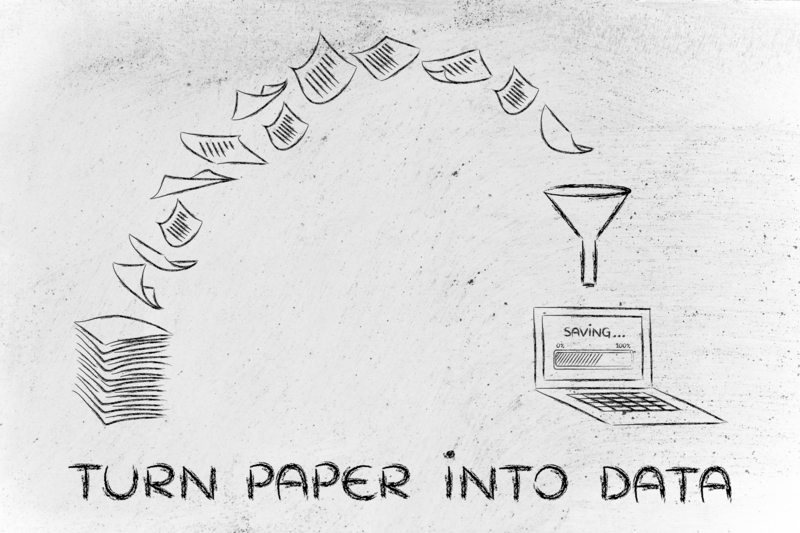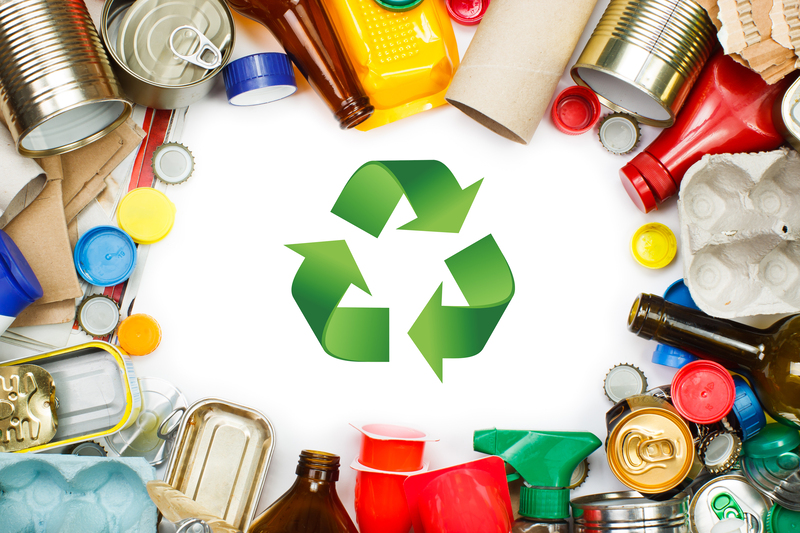Innovations in Stopping Microplastic Pollution: Hope on the Horizon
Microplastic pollution poses a significant threat to our environment, aquatic life, and even human health. As plastic debris breaks down, tiny particles--often less than 5mm in diameter--permeate our oceans, rivers, and food chain. The scale of this challenge has spurred global scientific and industrial communities to devise innovative strategies to curtail the spread of microplastics. In this comprehensive article, we explore the latest advancements in stopping microplastic contamination, offering hope for a cleaner, healthier planet.
Understanding the Challenge of Microplastic Pollution
To appreciate the significance of ongoing innovations, it is essential to grasp the scope and complexity of the microplastic pollution dilemma. Microplastics originate from various sources:
- Breakdown of larger plastic debris, such as bottles and bags
- Microbeads in personal care products
- Synthetic fibers shed from clothes during washing
- Industrial processes and tire wear off vehicles
These minuscule plastics infiltrate marine and freshwater environments, accumulate in sediments, and are ingested by aquatic organisms, posing risks to biodiversity, ecosystem health, and human food safety.
The Need for Innovation
Traditional waste management and recycling processes are insufficient to address the persistent and pervasive nature of microplastic contamination. A multi-pronged, innovative approach is crucial to tackle the problem at various points in the plastic life cycle.

Cutting-Edge Technologies Capturing Microplastics
Implementing effective solutions to trap and remove microplastics from water systems lies at the heart of many recent innovations. Let's explore the most promising approaches:
1. Advanced Filtration Systems
Water treatment plants worldwide are beginning to integrate novel filtration techniques specifically designed to capture microplastics. These include:
- Membrane bioreactors (MBRs): Combining biological treatment with ultrafine membranes to filter out microscopic particles.
- Nanotechnology-based filters: Using materials like graphene oxide and carbon nanotubes, these filters efficiently bind and trap even the smallest plastic particles from wastewater.
- Electrocoagulation: This process uses electric currents to bind microplastics together, making them easier to remove.
By retrofitting or upgrading existing water purification systems with these technologies, cities can dramatically reduce the microplastic load entering natural waterways.
2. Microplastic-Trapping Laundry Solutions
A significant portion of microplastics found in water systems is derived from synthetic fibers, released every time we wash our clothes. To address this:
- Washing machine filters: In countries like France, legislation already mandates filters in new washing machines by 2025.
- External filter units: Aftermarket devices like the Fit R Filter or PlanetCare can be attached to existing machines, capturing up to 90% of microfibers.
- Innovative laundry bags: Products like the Guppyfriend bag trap released microfibers during a wash and are gaining popularity among environmentally conscious consumers.
These laundry interventions represent a scalable and immediate action individuals and households can take to reduce microplastic pollution from textiles.
3. Floating Barriers and Seaborne Clean-up Devices
Innovative projects are taking to the water to physically remove floating plastic debris and microplastics:
- The Ocean Cleanup: A high-profile non-profit initiative developing autonomous systems that capture plastics--from large items to particles as small as 0.5mm--in rivers and oceans.
- "Bubble barriers": In cities like Amsterdam, underwater air curtains guide and trap plastics in rivers, facilitating collection before reaching oceans.
- Filtalon and Litter Traps: Designed to capture debris near river mouths and water treatment plant outlets.
Such interceptions at source points offer a proactive method to control the spread of microplastic pollutants before they disperse widely in the environment.
Biological Innovations: Nature-Inspired Solutions
In addition to physical and mechanical interventions, scientific advances are harnessing biology to degrade or capture microplastics:
1. Microbes that "Eat" Microplastics
Recent research focuses on microbial consortia--specialized bacteria and fungi capable of breaking down plastics into harmless substances. For instance:
- Ideonella sakaiensis: A bacterial strain discovered in Japan that produces enzymes to digest PET plastic.
- Fungi like Aspergillus tubingensis: Shown to degrade diverse plastic polymers in laboratory settings.
Though still under development, these bioremediation methods could eventually offer natural, sustainable pathways to reduce microplastic residues in soils and water.
2. Plant-based Filters and Bio-based Adsorbents
Eco-friendly alternatives to synthetic filters are emerging, including:
- Marsh plant roots: Certain aquatic plants naturally entrap microplastics in wetland environments.
- Biochar and other carbon-rich materials: Derived from plant matter, these adsorbents can immobilize plastic fragments with minimal chemical impact.
Restoring wetlands and integrating plant-based solutions combine ecosystem restoration with microplastic removal--an approach that promises multiple environmental benefits.
Innovating Upstream: Reducing Microplastic Generation
Prevention is a critical part of any strategy to stop microplastic pollution at its source. Cutting-edge efforts include:
1. Sustainable Material Innovations
- Biodegradable plastics: Derived from renewable resources, these materials are engineered to break down more rapidly and harmlessly than conventional plastics.
- Engineered fibers: Textile manufacturers are developing fabrics that shed fewer microfibers without compromising wear or functionality.
These material innovations reduce the potential for microplastic release throughout a product's life cycle--from manufacturing to disposal.
2. Bans on Microbeads and Primary Microplastics
Governments worldwide are enacting legislation to prohibit intentional microplastic additives in cosmetics, cleaning products, and industrial processes. The European Union, United States, and several Asian countries have introduced, or are in the process of introducing, strict regulations targeting microplastics.
- Microbead bans: The U.K. led the way in banning plastic microbeads in rinse-off cosmetics and personal care products.
- Expanded restrictions: Many countries are considering expanding these bans to cover industrial abrasives and agricultural products.
Legal measures send strong signals to industry and consumers while setting a standard for global action.
3. Innovations in Design and Extended Producer Responsibility (EPR)
Designing products for a circular economy--one that minimizes waste throughout the product lifecycle and encourages re-use, repair, and recycling--can significantly limit microplastic creation. Some examples include:
- Textiles that resist pilling: Clothing that sheds fewer fibers, designed using advanced materials and weaves.
- Closed-loop recycling systems: Infrastructure to capture, recycle, and repurpose plastics, thereby reducing primary plastic and microplastic output.
- Manufacturer accountability: EPR policies require companies to take responsibility for their products' entire lifecycle, incentivizing less polluting designs.
The Role of Research, Monitoring, and Citizen Science
Ongoing scientific research, standardized monitoring programs, and public engagement are vital components in the fight against microplastic contamination.
1. Real-Time Microplastic Sensors
Technological breakthroughs now enable researchers to track microplastics in situ, offering immediate data on pollution levels. Some advances include:
- Infrared spectroscopy: Portable devices can detect and analyze microplastics in water samples with high accuracy.
- Automated marine robots: Drones and underwater vehicles equipped with microplastic sensors provide mapping data across wide ocean regions.
Such data is essential for targeting hotspots and evaluating the success of remediation efforts.
2. Citizen Science Initiatives
Organizations and universities around the globe are empowering communities to contribute valuable data:
- Microplastic sample collection: Volunteers use standardized kits to take water and sediment samples from local water bodies.
- Public education campaigns: Raising awareness about the sources and effects of microplastic pollution encourages behavior change and grassroots advocacy for policy reforms.
The democratization of microplastic monitoring engages broader society and helps drive momentum for meaningful solutions.
Policy and Global Collaboration
Tackling microplastic contamination has become a top priority at the international level. The United Nations Environment Assembly (UNEA) and intergovernmental organizations are actively pursuing agreements aiming for a global plastic treaty. Key areas of policy focus include:
- Global standards for labeling and tracing plastics
- Funding mechanisms for research and development of microplastic removal technologies
- International bans on the most problematic plastics and microplastics
- Cooperation on monitoring and data-sharing
Such collaborative frameworks are essential for ensuring that innovations and best practices are widely adopted, scaled, and enforced on a global level.
What Can Individuals Do to Help Stop Microplastic Pollution?
While technological and regulatory measures are crucial, there are actions every person can take to limit their own microplastic footprint:
- Choose natural fibers: Whenever possible, select clothing and textiles made from organic or minimally processed fibers like cotton, wool, or hemp.
- Install laundry filters or use microfiber-trapping laundry bags.
- Avoid products containing microbeads or plastic glitter.
- Support companies using sustainable and recycled materials.
- Participate in local clean-ups and community science projects.
Every small action contributes to the larger movement to reduce microplastic pollution for future generations.

Looking Forward: The Future of Microplastic Solutions
With the nexus of technological ingenuity, scientific discovery, and policy leadership, there is genuine hope on the horizon for stopping microplastic pollution. The pace of innovation in microplastic removal, prevention, and detection will only increase as public awareness, funding, and international cooperation grow.
Key areas for optimism:
- Rapid progress in filter and remediation tech
- Scaling up production and accessibility of biodegradable materials
- Stronger global policy frameworks and industry accountability
- Community participation and education driving behavior change
By combining these approaches, we can transition from incremental improvements toward bold, systemic transformation in the way humanity manages plastic and its pervasive microscopic legacy.
Conclusion: Hope on the Horizon
The battle against microplastic contamination is far from over, but thanks to remarkable advances in science, engineering, and policy, the situation is no longer hopeless. As innovations in stopping microplastic pollution move from the lab to real-world deployment, every capture device, responsible regulation, and empowered citizen brings us closer to healthier oceans, rivers, and communities. The horizon is brighter than ever--provided we match innovation with collective will and determined action.